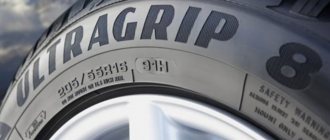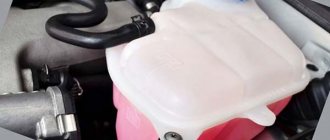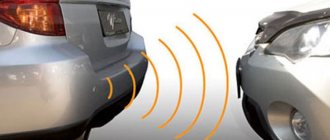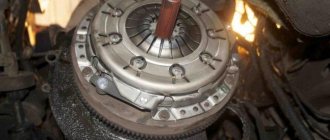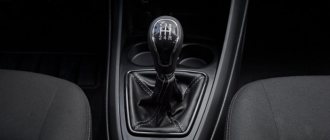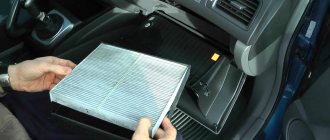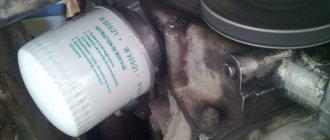Shelf life of unused tires
It is a fact! If an unused tire is stored in a dry, dark room at a temperature of +15 to +25 C (they are also stored in BlackTyres), then according to GOST standards it will be considered new for 5 years from the date of production and will not age for 3 years.
This happens thanks to additives (anti-aging agents) that are added to the rubber mixture by the manufacturer itself. If you follow all the principles of proper storage, they will retain the beneficial properties of car tires for a long time. After tire installation, the internal pressure will begin to erode the anti-aging agents and begin the process of counting its “age”.
You can understand that a tire has begun to age prematurely by the following signs:
- Significant deformation of the sidewalls;
- Microcracks;
- Gray color with a white coating.
It is better not to buy a bloated gray tire with cracks in the tread. This is unlikely to be a new design, most likely it was simply stored incorrectly for a long time.
Shelf life of winter tires
These tires are made of special winter rubber to be more elastic and not crack in the cold. Because of this, they have a specific shelf life. If the temperature, humidity, and darkness are at the proper level, wheels (both with studs and tires without them) can be stored for up to 7 years without use.
Shelf life of summer tires
The summer tread is tougher in rubber composition than its winter counterparts. Its savings period is much longer than that of winter, but it cannot exceed 10 years in compliance with all possible rules.
Shelf life of all-season tires
All-season vehicles are popular among drivers living in warm climates with mild winters. If the conditions of lighting, humidity and temperature are not violated, the shelf life of these car tires is at least 5 seasons from the date of manufacture.
What does wear depend on?
The suitability and wear of tires can be influenced by various factors: from the country of manufacture, mileage and conditions of use to storage method. Let's take a closer look.
Pressure
An insufficient number of atmospheres has a negative effect on rubber and its service life is reduced.
It is also not recommended to overinflate the wheels. This can lead to uneven wear. The optimal pressure in winter will be 1.6 - 2.6 bar. The exact number of atmospheres depends on the type of car and is indicated in the operating manual.
Tire pressure must be optimal to extend tire life.
Driving style and bad roads
To ensure long-term operation of car tires, you must:
- Do not exceed the average recommended speed of 90 km/h. This will preserve studded tires 45% better compared to driving at about 120 km.
- Movement along the highway should be smooth; it is recommended to avoid sudden jerks and slipping. You need to brake smoothly so as not to burn the rubber on the asphalt.
- The road surface and its quality play an important role in wheel wear. But ordinary drivers have little influence on this factor.
Tire life
It is a fact!
Once the new tire is on the car's wheels, you can drive it without fear of tread wear for an average of another 5 years. However, the five-year service period is only a convention. What is much more important is not the release date, but the degree of everyday wear and mileage of the tire. It is worth paying attention to the remaining tread depth: for passenger cars weighing less than 3.5 tons it is 1.6 mm, for trucks over 3.5 tons - 1.0 mm, for buses - 2.0 mm, for motorcycles and mopeds - 0.8 mm.
The service life of car tires will begin to steadily decline for several reasons:
- Excessively high tire pressure and high overloads;
- Daily mileage;
- Car suspension malfunctions;
- Aggressive driving (will last 1-2 seasons);
- Driving on bad roads.
However, even with the most careful driving, the maximum service life is 10 years. According to the manufacturers, having crossed this threshold, the tire will lose all its useful properties due to a high degree of wear, and driving with such a tread will become simply dangerous.
The maximum mileage after which it is recommended to change the tire also matters. Its value depends on the type of transport:
- Passenger cars with a carrying capacity of up to 2 tons – 45 thousand km.
- Trucks 2-4 tons - 60 thousand km.
- Trucks over 4 tons – 68-70 thousand km.
Beware - a myth! They say that car tires of different batches have different service periods and wear resistance, which means the production date can also cause a defect even with low mileage. But the truth is that the composition of raw materials and technology are the same for everyone, and it doesn’t matter where in the world the industry leader opened his next plant. The operational requirements are the same both in Germany and in Taiwan.
Service life of winter tires
When the car does get new “shoes”, it is worth considering that the service life of winter tires differs depending on the type of winter tires:
- Friction (“Velcro”) will last up to five seasons if driven carefully and without extreme wear.
- Studded tires will last an average of 3-4 seasons, again if their driver does not want to regularly check the tread for strength during steep turns and off-road conditions.
Lifespan of summer tires
Summer treads are created more rigid than elastic and soft winter ones, and therefore the service life of tires with the most careful driving of a car on a flat road surface is on average 5-6 years.
Service life of all-season tires
The wear rates of car tires greatly depend on the climate in which the trips take place, but when driving in European winters and hot summers, all-season tires “live” on average 3-4 years.
How many seasons does a tire last?
There can be many reasons for tire wear, but they are easy to identify; it is important to study the surface of the tread pattern.
If the outer edges show more wear than the center of the tread, your tires are under or over-inflated. And not equally worn tread edges exclusively on one side alert the driver to wheel alignment problems. In addition to wear, how long tires last is also influenced by how you drive your car. For extreme sports enthusiasts with sharp brakes, the tread will wear out faster. It becomes clear that durability is affected not only by the type of car race the wheels are suitable for, but also by other factors:
- driving style;
- road quality;
- participation in emergency situations.
It is important to remember about regular technical inspection, and also check the tire pressure every 14 days.
Regarding the balance, this should be done every 15,000 km of the vehicle. After hitting an obstacle, it is necessary to inspect the tires for damage and hernias.
From theory to practice
Enough has already been said in theory about what the service life and shelf life of tires are. Now let's talk about whether it's worth bothering yourself with these numbers when going to the store. Lately, the issue that tires need to be checked almost like milk cartons has been raised more and more often and only confuses buyers.
The first thing to keep in mind: in the warehouse of a large online store (including BlackTyres) tires are in constant circulation. It is extremely difficult to sort them depending on the service period due to the fact that storekeepers ship thousands of items every day, and order delivery points accept mixed batches. There are very rare cases when they will be determined by year - usually in the off-season, or when a large batch has arrived from the factory, but they will be stored in common cells.
Second: we have tires in our warehouse that are 4-5 years old after manufacture. They are sold along with the “young ones”, since people often drive older models, change them 1-2 times a year and do not complain. However, if the client is concerned about the expiration date, he will be given a letter of guarantee that we take responsibility for the occurrence of warranty cases.
And finally, the last and most important: in all modern enterprises, tires are produced mainly by robots on high-precision equipment using the same technology, with the same composition of raw materials. Therefore, there is no difference between products that were released three years apart, if the storage rules were not violated.
What happens if you drive on very old tires?
The main negative point in the described situation is poor adhesion to asphalt. This negatively affects the vehicle's handling and increases the risk of an accident.
Driving on old tires can be quite dangerous
The second risk factor is a thin tire, which can rupture at any time even with minimal loads. The most dangerous thing is if an emergency occurs at speed. This often ends in serious accidents.
In addition, worn tires consume more fuel and worsen the appearance of the car. And the condition of the tires itself indicates the level of vehicle maintenance and the responsibility of the owner.
In practice, using tires with average wear is no less dangerous than “bald” tires. Even a dry road becomes a lottery, since the braking distance increases significantly.
Increased service life
The guaranteed service life of studded winter tires or classic tires can be extended without compromising the safety of passengers and other road users. Installation is carried out under the conditions of an authorized service station. Its employees rely in their work on the recommendations of the car manufacturer. The operating instructions list the requirements that must be met. Attempts to install it yourself will lead to damage, for example, to the cord layer. The expiration date of winter tires and studs are selected, taking into account the weather conditions in the region. The more often the weather shows a harsh temperament, the higher the requirements for the manufacturer. A qualified service station employee will provide invaluable assistance.
The installation is followed by balancing, which is carried out using computer equipment. Safe use of winter studded tires is only possible with an even load on each wheel. If there is a imbalance, then problems will not keep you waiting. List of other recommendations, compliance with which will extend the service life:
- Constant control of pressure level. The check is carried out at least once every 15-20 days. An increased level of pressure provokes the internal surface, and a lower level threatens the external part.
- Maintaining a sanitary condition - the actual period of use of winter studded tires depends on the prompt removal of traces of oil, dirt, and foreign objects.
- Visual inspection - the problem is eliminated as soon as the first symptoms are recorded. A small cut or chip requires immediate attention.
- Balancing – Severe weather conditions have an increased impact. At least once a month he comes to the service station to carry out computer monitoring of the condition of the wheels.
- Storage rules - at the time of purchasing wheels, it is worth checking whether the seller followed the recommendations of the wheel manufacturer or not. Each type of rubber is stored at a certain temperature. If the seller or the owner of the wheels violated the rules, then problems will make themselves felt. Store shoes at a temperature of +24 – + 25 °C. The ventilated area should have a moderate level of humidity.
The car must have a spare tire for quick replacement. Despite the fact that the shelf life of winter studded or studless tires can be long, you need to be prepared for various situations.
On a note! When the tires are replaced, the valve is changed. The driver checks the degree of its tightness.
When to change summer tires to a winter set in 2021: exact date, date, month
The relevant law is Technical Regulations of the Customs Union TR CU 018/2011 On the safety of wheeled vehicles.
In this article we will talk about the legally established deadlines for changing summer tires to winter ones. In addition, a fine for improper use of tires will be considered.
There is also a general one:
“When the average daily temperature reaches +5 Celsius!” That is why on many modern cars, when the temperature drops to +4 C°, a warning appears on the instrument panel in the form of flashing this very value, accompanied by a sound signal.


